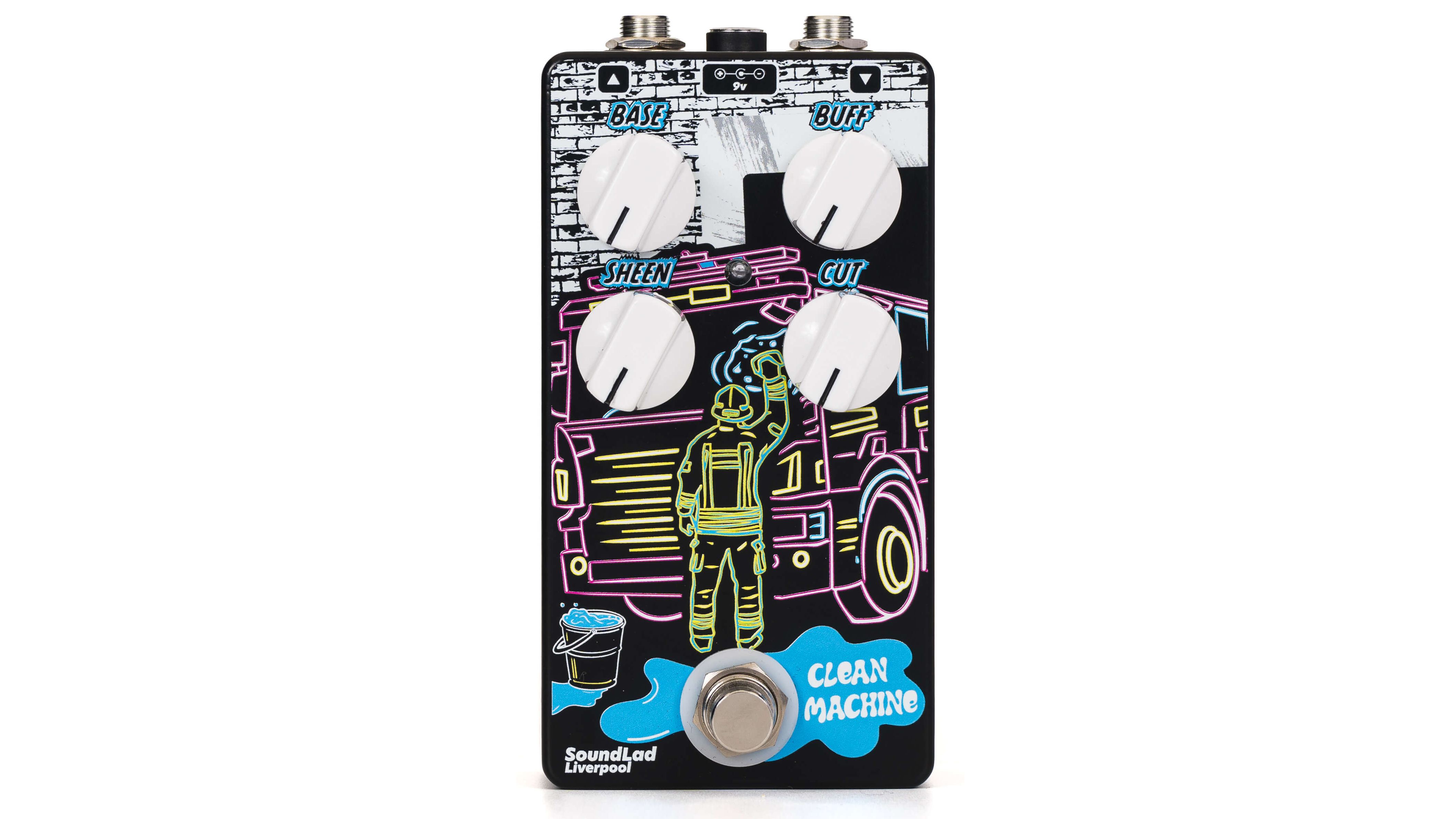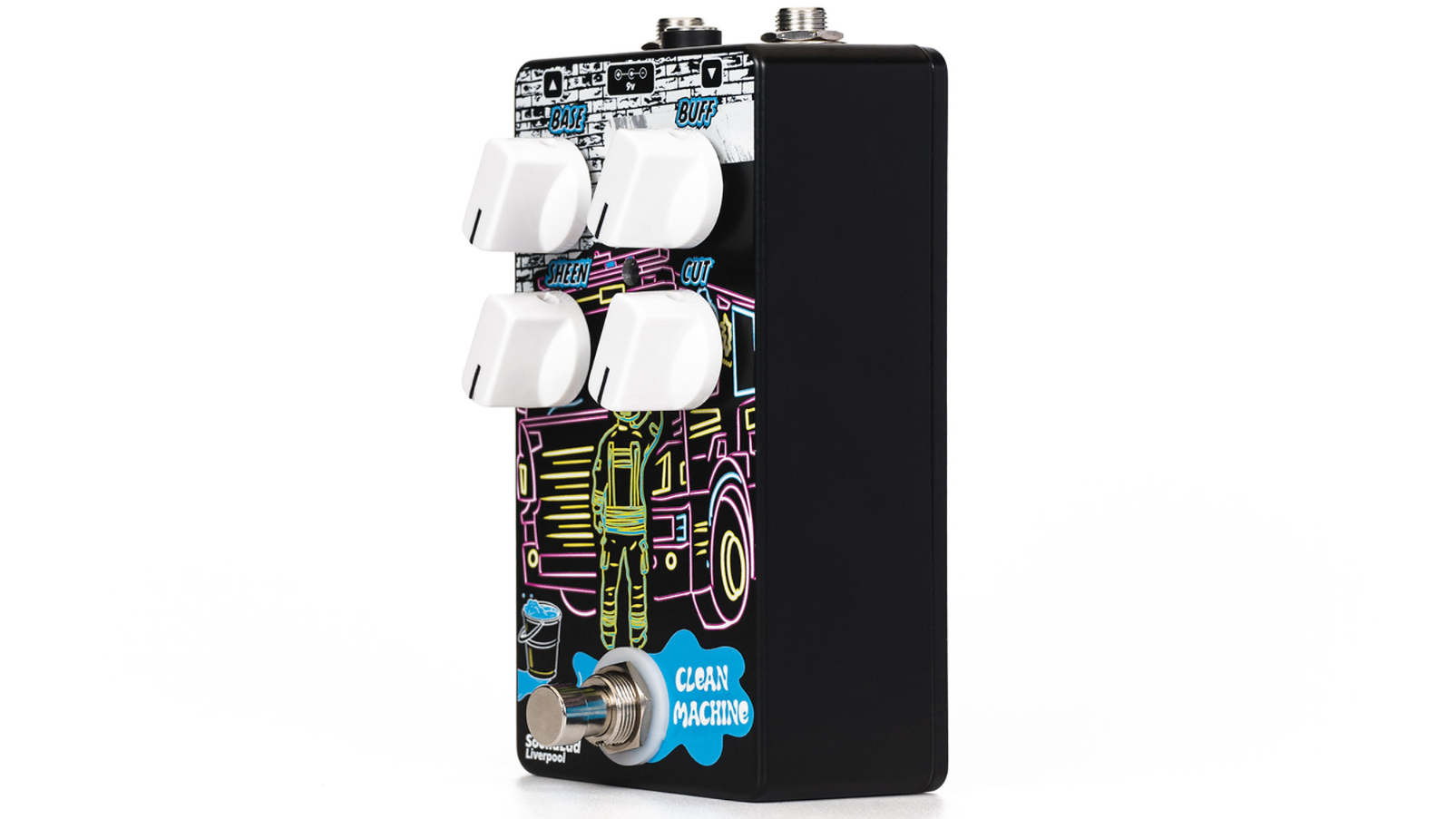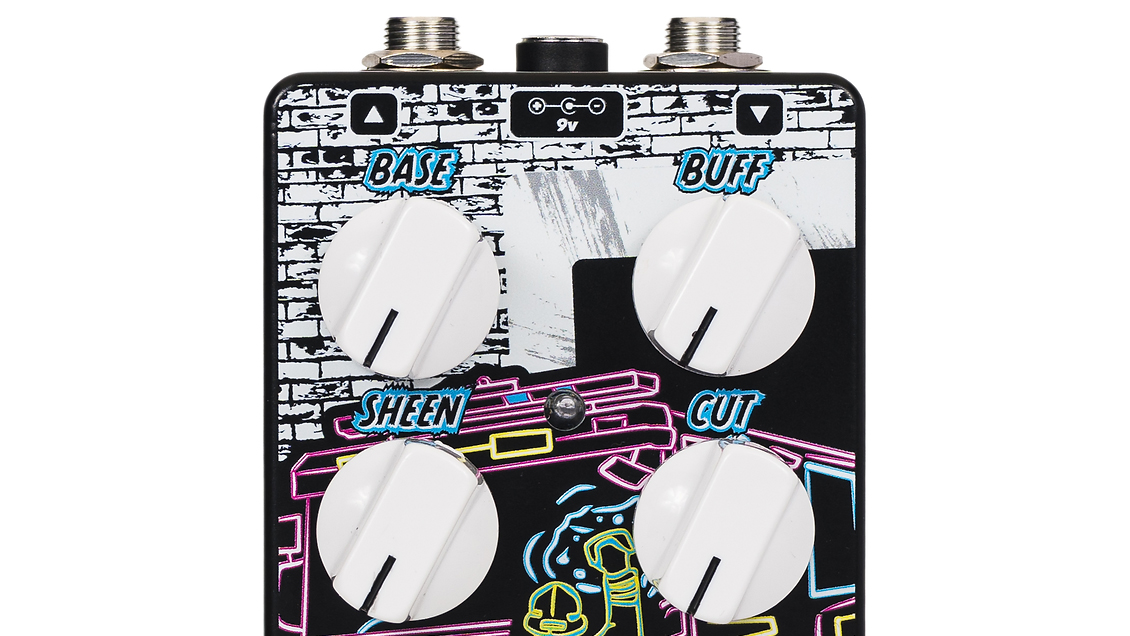MusicRadar Verdict
This is one excellent-sounding pedal. Once it's dialled in, it just makes the guitar sound better. Whether that's fatter, more articulate, or with a harmonic distortion edge, all of these can used to give a more 'finished' feel to the guitar tone.
Pros
- +
Sounds amazing
- +
Versatile tone shaping
- +
Can push a tube amp into saturation
Cons
- -
Requires the manual to dial in
MusicRadar's got your back
SoundLad Liverpool Clean Machine: What is it?
What's exciting about the Clean Machine is that it's something a little bit different from your standard SHO clone or simple pre-amp. It's an EQ shaper built around an inductive top-end filter. The tone and saturation is from a transformer output, giving it a little bit of the feel of a channel strip. The sound of going straight in to an API or Neve style console is very addictive, so how does this pedal stack up?
SoundLad Liverpool Clean Machine: Performance and verdict

For what appears at first glance to be a boost pedal, there are hidden depths here. We twist some knobs, get an SHO-like boost going and slam our Marshall stack into saturation. Cool, but it feels like we're missing a trick as we try to get the hang of the controls. Out comes the manual.
Base cuts the bass below 2.6kHz, and is useful for taming downtuned guitars. Buff is the gain control, and is very interactive with Base, as it is a pre-gain EQ stage. Sheen is a parallel high cut above 740Hz, which becomes more pronounced as you turn the dial to the left. Cut is the final volume output, paired with a low-pass filter below 1.5kHz.

I've played a lot of harmonic overdrives, and the Clean Machine sits somewhere between those and a straightforward preamp
The best sounds that we found were setting the Sheen and Cut controls at about 1 o' clock, and then experimenting from there. As you pull the Sheen to the left, you start to get a Tube Screamer-type EQ curve. However, we found that wasn't quite to our taste when stacked with other pedals and our amp. If you're a fan of pushed mids, you'll want that control below 12 o' clock. To get a treble boost with the Buff control up, pull the Base control back to about 9 o'clock.
It will start to get scratchy, depending on your pickups, as you raise the Buff level too far, but it's possible to dial in a punchy, Vox-ish bite. For something fatter, our favourite sound was pushing the Base up to noon, and the Cut to 3 o' clock for a thick, Tom Morello-like riff-ready tone.
This setting stacked well with other drives, and even with single coils was thick but not muddy or flabby, perfect for riffing on the lower strings. Increasing the gain leads to sharper saturation on lead lines, but it's possible to dial in thick clean sounds without it fully breaking up. I've played a lot of harmonic overdrives, and the Clean Machine sits somewhere between those and a straightforward preamp.

As mentioned before, the fact it requires some understanding of what the knobs do will either resonate with you as the sign of a serious bit of kit, or prove somewhat infuriating. Quirky knob names are a given in today's boutique market. Still, on this occasion it would have been better to have more descriptive knob names and legends. The best modern amp simulators and multi-fx units don't require a manual to understand, and it doesn't feel unreasonable to expect the same of a preamp pedal.
Want all the hottest music and gear news, reviews, deals, features and more, direct to your inbox? Sign up here.
All in all, then, the Clean Machine gets demerits for being hard to use, but look - the sounds can't be faulted. Like most of these things, it's not something that most people will notice live, but it is the sort of thing we'd use in studio. Just scratch some go-to settings on the enclosure, and throw it in your gig bag before a session.
MusicRadar verdict: This is one excellent-sounding pedal. Once it's dialled in, it just makes the guitar sound better. Whether that's fatter, more articulate, or with a harmonic distortion edge, all of these can used to give a more 'finished' feel to the guitar tone.
SoundLad Liverpool Clean Machine: Hands-on demos
Let's Play All
Muse Guitars And Gear
SoundLad Liverpool Clean Machine: Specifications

- TYPE: Preamp / clean boost
- ORIGIN: UK
- CONTROLS: Base (Bass), Buff (Gain), Sheen (Parallel High Cut), Cut (Output
- FEATURES: Input, Output, Power
- BYPASS: True
- POWER: 9V centre-negative power supply (9mA current draw)
- CONTACT: SoundLad Liverpool
Alex Lynham is a gear obsessive who's been collecting and building modern and vintage equipment since he got his first Saturday job. Besides reviewing countless pedals for Total Guitar, he's written guides on how to build your first pedal, how to build a tube amp from a kit, and briefly went viral when he released a glitch delay pedal, the Atom Smasher.

